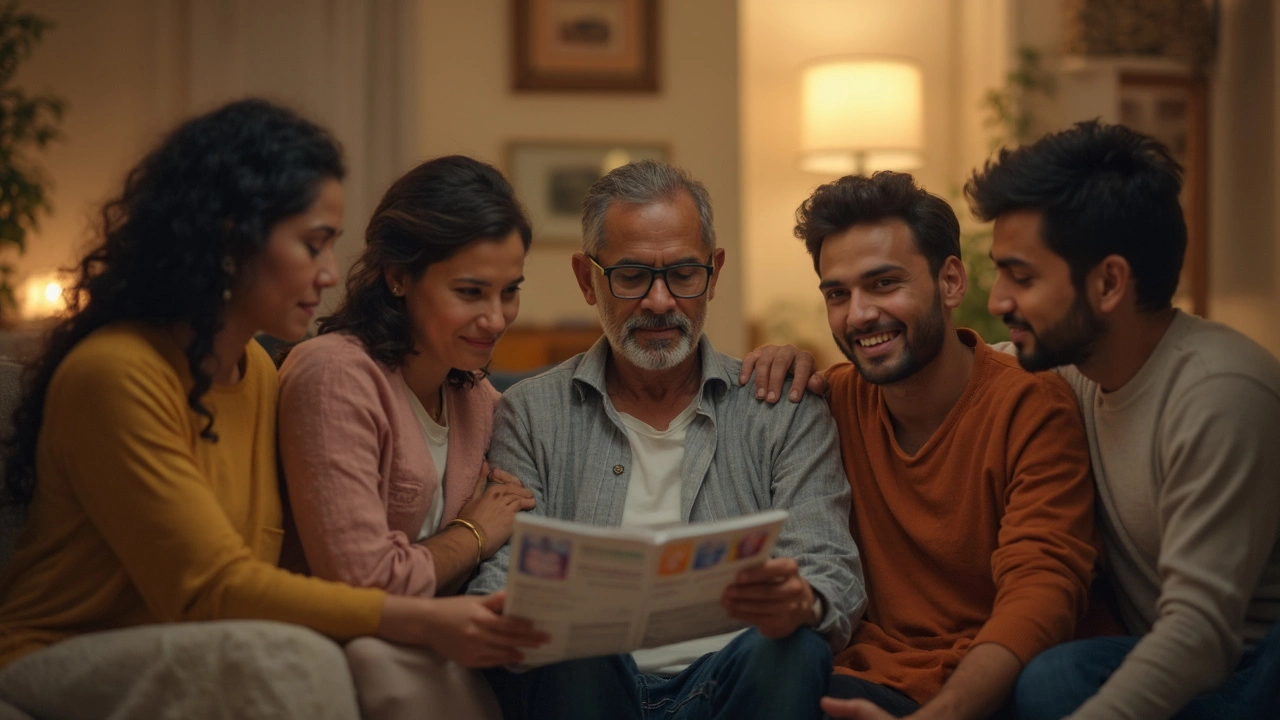
When you think of cancer, you usually worry about it spreading quietly. Some types, though, waste no time. They show up, take over, and move lightning fast. So, which cancer really tops the list for being the fastest killer?
If you talk with oncologists, two names come up a lot: pancreatic cancer and small cell lung cancer. Both grow and spread at a scary pace. Pancreatic cancer often flies under the radar until it’s in charge. Small cell lung cancer? It responds to treatment for a bit, then fights back even harder.
The worst part? Early symptoms barely show up, if at all. We’re talking mild stomach pain, slight cough, or a little weight loss—stuff you might brush off. I’ve read stories about people feeling fine one day, and weeks later, getting diagnosed with stage 4 cancer. No joke.
If you’re worried, just remember: the faster you get checked out, the better your odds. Shadow, my dog, sometimes seems to know when I’m off—if only humans paid as much attention to subtle changes. Trust your gut. Don’t put off seeing your doctor if you notice weird symptoms sticking around. That nudge can save more than just your peace of mind.
- Cancers That Move Fast: The Usual Suspects
- Why Are Some Cancers So Aggressive?
- Catching It Early: Signs You Shouldn’t Miss
- Tough Conversations and Treatment Realities
Cancers That Move Fast: The Usual Suspects
When people say "aggressive cancer," they're pointing to the scary side of the disease. Two big names always pop up: pancreatic cancer and small cell lung cancer. These are not the slow-growing kind. They’re called "fastest killing cancer" types for a reason.
Pancreatic cancer is brutal because it barely shows symptoms early on. By the time you feel sick, it’s often late stage. The five-year survival rate? Under 12%. That’s rough, and a big reason is the speed this cancer spreads—sometimes in just weeks. Former Jeopardy! host Alex Trebek battled this. He used his platform to remind folks not to ignore strange abdominal pain.
Small cell lung cancer is another beast. It makes up about 10-15% of lung cancers but packs a punch. It doubles in size every 30 days or so, which is insanely quick. Treatment can knock it back, but it tends to come roaring back. That’s why regular screenings help, especially for smokers or ex-smokers over 50.
If you’re looking for numbers, check this out:
| Cancer Type | Median Survival (Late Stage, Months) | Five-year Survival Rate |
|---|---|---|
| Pancreatic | 4-6 | <12% |
| Small Cell Lung | 6-12 | <7% |
| Glioblastoma (Brain) | 12-15 | <7% |
So when you hear terms like aggressive cancer or fastest killing cancer, these are often what doctors mean. Other fast cancers include glioblastoma (brain), certain types of leukemia like acute myeloid leukemia, and inflammatory breast cancer. Each has its own pace, but the top two by speed and deadliness stay the same.
If you have family history or risk factors, keep up with your checkups. Don’t wait until symptoms hit. Early tests can mean a completely different story.
Why Are Some Cancers So Aggressive?
Ever wondered why some fastest killing cancers just take off and don't give you a chance to fight back? It's all about how these cancers act under the hood—their biology is like a car stuck on the gas pedal. They grow, divide, and spread (that's called metastasize) in record time. Here’s what that means for real people:
- Genetics Gone Rogue: Cancers like small cell lung cancer and pancreatic cancer often come from cells that already multiply quickly in the body, so when things go wrong, they lose control fast. Their genes can make them resistant to normal cell death.
- Dodging the Immune System: These cancers are good at hiding. The immune system can’t find or kill them like it should, so they get free rein to keep growing.
- Tricky Locations: Take pancreatic cancer. The pancreas sits deep in the belly, surrounded by important stuff. Tumors here are hard to spot until they’ve gotten big or spread. When symptoms finally show, it’s often late in the game.
- Spreading Early: Aggressive cancers don’t wait around. Cells break off and travel to other parts of the body, forming new tumors. That’s why stage 4 diagnoses happen so fast.
Check out this quick comparison to get a feel for just how fast things move. Small cell lung cancer can double in size in less than a month. Pancreatic cancer also spreads quickly, with 80% of cases diagnosed when it’s already advanced.
| Cancer Type | Typical Doubling Time | % Found After Already Spreading |
|---|---|---|
| Small Cell Lung Cancer | ~30 days | 70% |
| Pancreatic Cancer | ~60 days | 80% |
The ugly truth? Standard treatments like surgery, chemo, and radiation have to chase these cancers fast, often with fewer success stories. So many people wonder what hit them—they felt a bit off, went to the doc, and already had a fight on their hands.
If you catch weird symptoms that don't go away, don’t wait. Aggressive cancers don’t give second chances.

Catching It Early: Signs You Shouldn’t Miss
With fastest killing cancer types like pancreatic and small cell lung cancer, time is everything. But the signs are not always textbook. They can show up as things you’d probably ignore on a busy day. So, what should you actually look for?
- Unexplained weight loss – Not even trying but dropping pounds? That’s one of the most frequent early signals for both pancreatic cancer and small cell lung cancer.
- Ongoing fatigue – And not the "I-stayed-up-late" kind. This is a deep tiredness that doesn’t go away with rest.
- Stomach pain or back pain – Pancreatic cancer especially can cause vague upper belly pain that may spread to your back.
- Jaundice – A yellow tint to your skin or eyes can be one of the first things people notice with pancreatic cancer.
- New or worsening cough – For small cell lung cancer, this is a big one. Especially if you don’t have a cold or allergies.
- Shortness of breath – A sudden struggle to catch your breath without exercise is risky territory.
Notice how nothing here screams “danger” at first? That’s the problem. Most people shrug these off, thinking it’ll pass. If something is hanging around for more than a couple weeks or keeps coming back, get it checked.
| Early Symptom | Possible Cancer | Reason to Act |
|---|---|---|
| Unexplained weight loss | Pancreatic, Small cell lung | Common sign for both |
| Persistent cough | Small cell lung | Often first clue |
| Jaundice | Pancreatic | Needs fast workup |
| Fatigue | Both types | Can be subtle but serious |
If you already face risk factors like smoking (for lung cancer) or family history (for pancreatic cancer), be even more alert. Regular screening is not standard for these cancers in most people, but talking to your doctor about your risk could make a difference.
Cancers that kill quickly leave such a small window—listen to your body. Don’t feel silly for asking questions, even if you think it’s nothing. Better safe than sorry, right?
Tough Conversations and Treatment Realities
When you’re dealing with a fastest killing cancer like pancreatic or small cell lung cancer, things move fast—not just in the body, but in the choices you have to make. These aren’t the kinds of cancers where you have months to think over every option. Doctors usually don’t sugarcoat it: if you’re facing these aggressive cancers, setting priorities early makes a difference.
Treatment plans may include a mix of surgery, chemo, radiation, and sometimes newer options like immunotherapy. With pancreatic cancer, only about 15-20% of people can have surgery because it’s often found late. For small cell lung cancer, chemo and radiation start right away, but this cancer is famous for coming back.
Here’s a quick look at typical treatment options:
- Pancreatic Cancer: Surgery (if possible), chemo, maybe targeted drugs for specific mutations.
- Small Cell Lung Cancer: Usually no surgery—chemo and radiation up front, sometimes combined with immunotherapy.
But it’s not just about the medicine. You’ll have to talk about what matters most: managing pain, keeping up your energy, and leaning on your support system. These talks are hard but necessary. If the outlook looks tough, doctors might shift the main goal to quality of life rather than a cure. That isn’t giving up—sometimes the real win is feeling as good as possible for as long as possible.
Want a quick peek at the stats? Check this out:
| Cancer Type | 5-Year Survival Rate |
|---|---|
| Pancreatic Cancer | About 12% |
| Small Cell Lung Cancer | About 7% |
Numbers like that hit hard. But they also drive home the point: don’t wait for a crisis to get honest, clear info from your team. Bring friends or family to appointments, write down your questions, and never settle for answers you don’t understand. Staying involved helps you control what you can, even when things feel out of control.





Rohan Talvani
I am a manufacturing expert with over 15 years of experience in streamlining production processes and enhancing operational efficiency. My work often takes me into the technical nitty-gritty of production, but I have a keen interest in writing about medicine in India—an intersection of tradition and modern practices that captivates me. I strive to incorporate innovative approaches in everything I do, whether in my professional role or as an author. My passion for writing about health topics stems from a strong belief in knowledge sharing and its potential to bring about positive changes.
view all postsWrite a comment